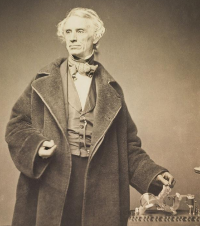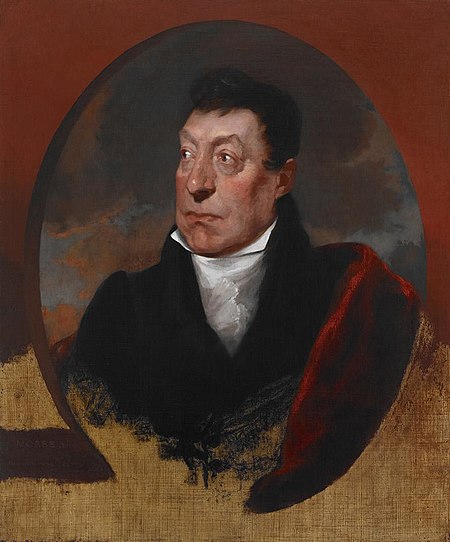Samuel Morse
 Samuel Morse (1791 - 1872) is perhaps best known for the telegraph (something he did not invent but was the first to develop for long range communications) and what is known today as "Morse Code" (named for him but developed with others). But Samuel Morse doesn't quite fit the current mold of a technology leader. In recent days there is much emphasis on Science, Technology and Math in our schools but sometimes one critical component for invention is ignored - creativity. Samuel Morse had that in spades - in fact, he was a painter, and a professor of art and sculpture in NYC.
Samuel Morse (1791 - 1872) is perhaps best known for the telegraph (something he did not invent but was the first to develop for long range communications) and what is known today as "Morse Code" (named for him but developed with others). But Samuel Morse doesn't quite fit the current mold of a technology leader. In recent days there is much emphasis on Science, Technology and Math in our schools but sometimes one critical component for invention is ignored - creativity. Samuel Morse had that in spades - in fact, he was a painter, and a professor of art and sculpture in NYC.
Morse knew he wanted to paint early in life and eventually convinced his father to send him to England to learn the craft. When he returned to America in 1815 (he was born in 1791) he realized fairly quickly that Americans had no appreciation for art. There were no Art museums and most Americans had never travelled in Europe so Morse set out to change this by founding a National Academy of Design in NYC to educate artists and lecture on fine art.
 He was soon married with three young children and his grand romantic historical paintings were not selling. Morse ended up pursuing commissions for portaits which led him far from home in New Haven, CT. In 1825 Morse was in Washington DC working on a portrait of the Marquis de Layfayette who was then touring America. As a classically trained artist of some renown, Morse was being called upon to do portraits of many famous people and Lafayette was the general who had helped George Washinton win the American Revolution to say nothing of storming the Bastille in the French Revolution!
He was soon married with three young children and his grand romantic historical paintings were not selling. Morse ended up pursuing commissions for portaits which led him far from home in New Haven, CT. In 1825 Morse was in Washington DC working on a portrait of the Marquis de Layfayette who was then touring America. As a classically trained artist of some renown, Morse was being called upon to do portraits of many famous people and Lafayette was the general who had helped George Washinton win the American Revolution to say nothing of storming the Bastille in the French Revolution!
While Morse was working on the portrait, he received word (by horse messenger) that his wife was very ill. By the time he arrived home he found she had already been buried. It is likely that this event factored in his decision a few years later to collaborate with Joseph Henry to develop a working telegraph system based on the electromagnet he first encountered by chance while travelling with Charles Thomas Jackson. As inventor he saw a practical application for the phenomenon and as an artist he was able to make sketches of the concept. A few years later he collaborated with another inventor, Alfred Vail to develop what we know today as Morse code which could be used over that telegraph system.
"On May 24, 1844, Samuel F. B. Morse wowed the American public when he sent the biblical message “What hath God wrought?” by telegraph, from the Supreme Court room in the U.S. Capitol in Washington, D.C. to Baltimore over the experimental 38 mile telegraph line which had been commissioned by Congress. Seventeen years later, telegraph lines spanned the entire country." - Smithsonian.com